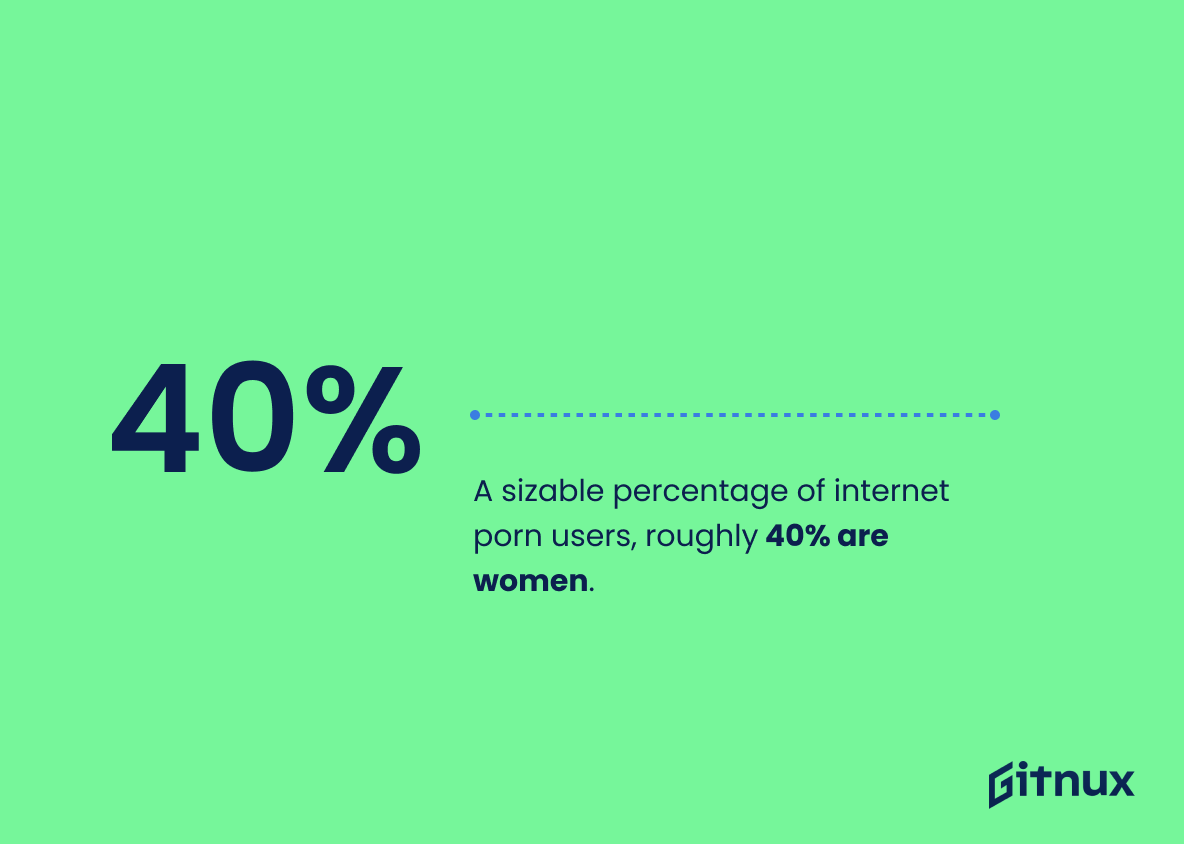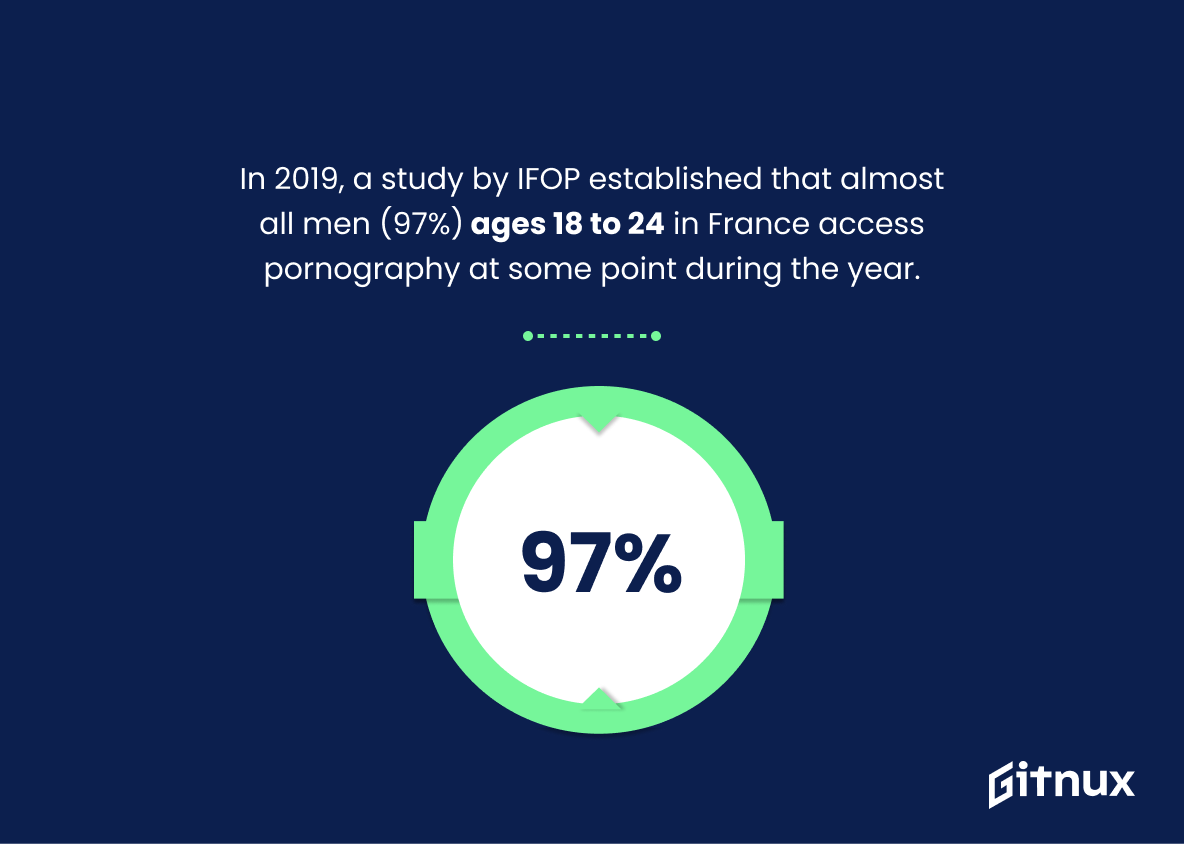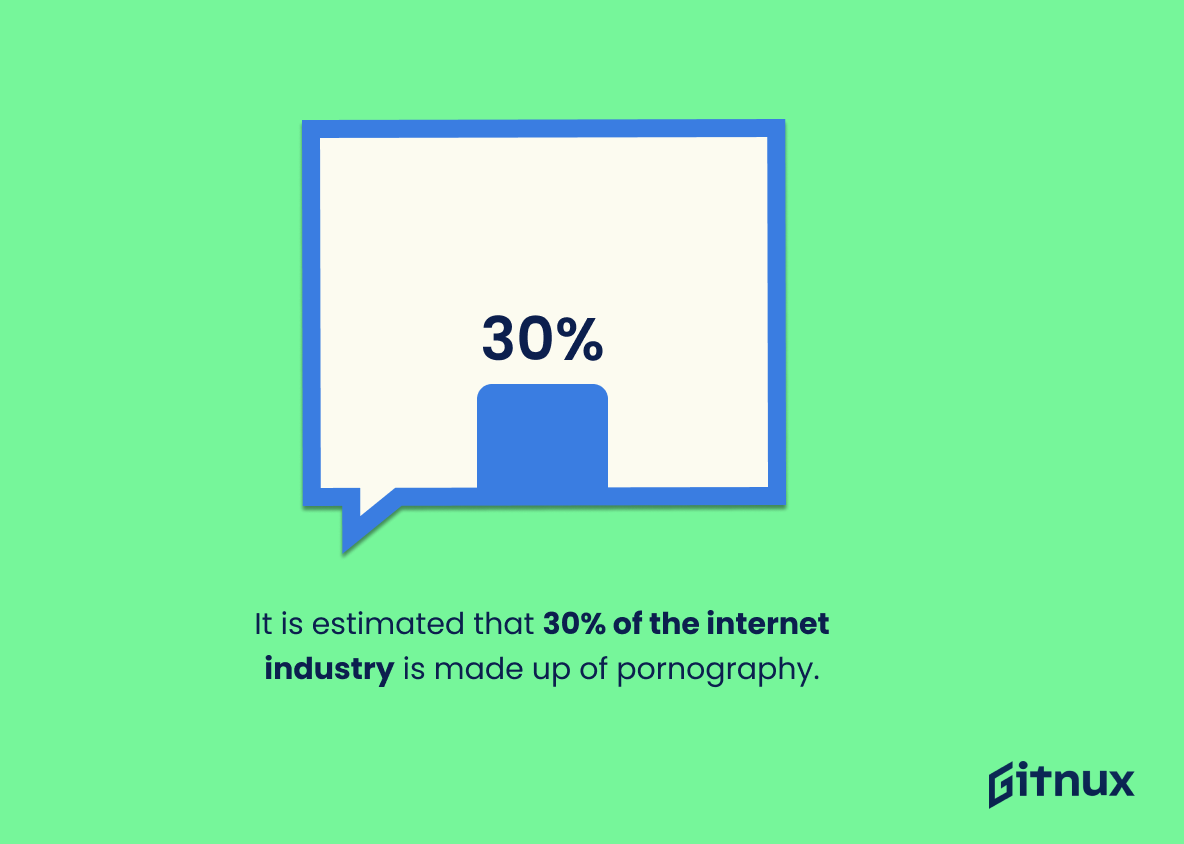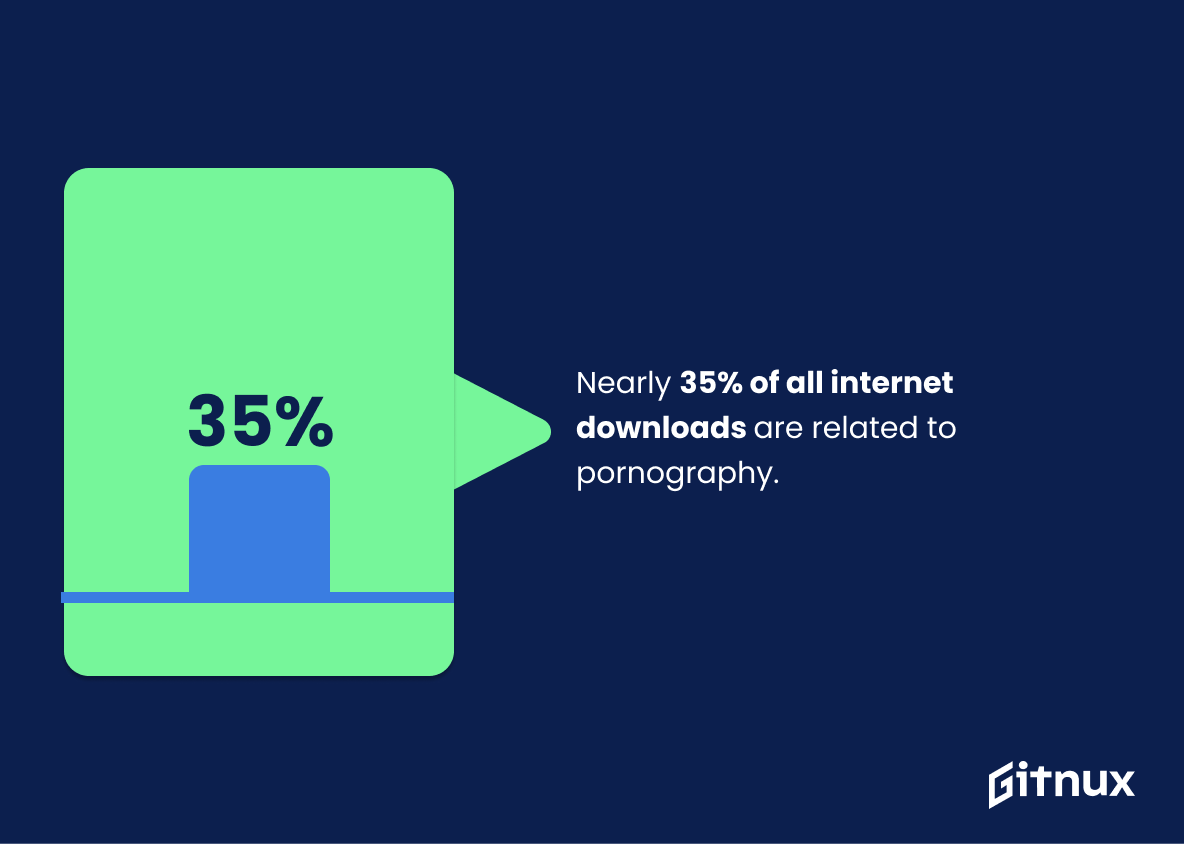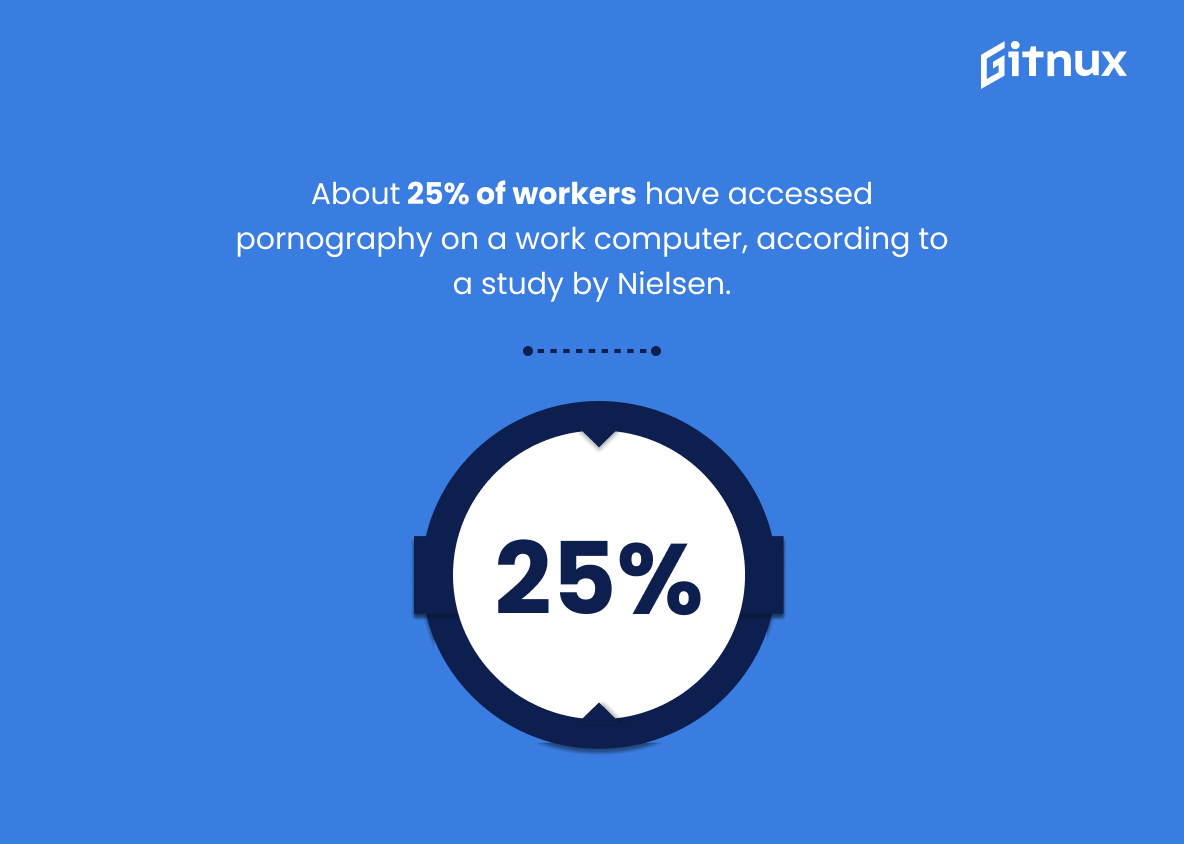Delving into a topic that is often surrounded by secrecy and stigma, today’s blog post casts a spotlight on the omnipresent yet often overlooked world of pornography. In an era where digital connection becomes increasingly pivotal, we will crunch the numbers behind the thriving adult industry, offering unparalleled insights into pornography statistics. Despite its taboo nature, these statistics reveal a fascinating landscape of consumer behavior, societal norms, and shifting trends.
This aim of this post isn’t to pass judgment or stoke controversy, but rather, to inform, enlighten, and engender critical thinking about an element of modern society that intricately links to numerous other sectors, including tech, mental health, and social attitudes. Buckle in as we journey into the raw figures behind an industry that is often whispered about, but seldom openly discussed.
The Latest Pornography Statistics Unveiled
As of 2020, more than 42 billion visits were made to Pornhub from all around the world.
In the grand chessboard, where numbers dictate stories, the revelation that over 42 billion visits were made to Pornhub globally in 2020 provides a profound insight into the magnitude of the adult entertainment industry’s digital consumption. It’s an unfathomable number, almost flirting with the galactic, encapsulating a reality where adult content viewing is happening on such a colossal scale.
This staggering digit offers tangible evidence of pornography’s omnipresence in the worldwide digital landscape, seamlessly intertwining with our discussions about the industry’s impacts on society, economics, technology, and even individual behavior. Simply put, it serves as an indisputable testament to the behemoth that the adult entertainment industry has become in the digital age.
Approximately 25% of all search engine requests are pornography-related.
Delving into the intriguing facets of pornography statistics, it is impossible to ignore the startling prominence of adult content in search engine requests. Now, consider this: a quarter of all these requests are directed towards pornography-related content. It’s almost as if we’ve stumbled upon a secret world that thrives in the shadowy corners of the internet.
This dramatic figure not only underscores the widespread consumption of adult content but also indirectly reflects societal behaviors, interests, and tendencies related to pornography. It could also hint at societal issues such as addiction or concerns related to mental health, yet also indicate the potential for businesses to tap into an enormous market. The extent of its influence, therefore, remains a major point of investigation in understanding the implications, whether it be of a psychological, societal or economic nature.
A sizable percentage of internet porn users, roughly 40% are women.
Peering behind the curtain of adult content consumption, we stumble upon an intriguingly substantial figure. Contrary to popular belief, it is not exclusively the menfolk who explore the world of internet porn; indeed, women constitute a sizeable 40%. The revelation intriguingly overturns cliché understandings about women being ‘onlookers’ in digital adult content, dramatically reframing the spectrum of audience demographics.
Contextualized within the broader narrative of pornography statistics, this data refutes homogeneous representations of such users, amplifying the importance of bespoke strategies catering to a more diverse audience spectrum. It underscores the necessity of re-evaluating content, marketing strategies, and discussions surrounding internet pornography, sweeping beyond the realm of men and embracing the female demographic equally heretofore overlooked or underreported.
69% of the pay-per-view internet content market is composed of adult entertainment.
Digging deep into the predominance of adult entertainment in the pay-per-view internet content market, we unearth the staggering figure of 69%. This is not just a number, but a glaring evidence of the dominant grip adult entertainment holds, graphically painting a picture of its pervasive impact and vast influence.
Reinforcing this with hard numbers does more than just underscore the magnitude of the adult entertainment industry; it cues us into the supply-demand dynamics, economic implications and social concerns tangled up in this often whispered about, yet primary segment of online pay-per-view media consumption.
In 2019, a study by IFOP established that almost all men (97%) ages 18 to 24 in France access pornography at some point during the year.
The revelation that a staggering 97% of French males aged 18 to 24 have, at some point in 2019, found their way to consume pornography, throws light on an intriguing pattern of digital consumption. The statistical illustration from IFOP not only shatters assumptions about the sporadic use of adult content but also underscores its pervasive presence in the lifestyle of young French men.
In the chessboard of pornography statistics, this formidable number is a checkmate, catapulting the discourse around the ubiquity and acceptance of pornography as a cultural norm. Particularly, understanding the role of technology and the internet in shaping this pattern can offer profound insights into the societal and psychological impacts of this prevalent consumption behavior.
The most frequently searched terms on Pornhub are ‘lesbian,’ ‘hentai’ and ‘milf’.
Peeling back the curtain on the world of pornography consumption can offer intriguing insights. The triumph of ‘lesbian,’ ‘hentai,’ and ‘milf’ as the reigning champions among Pornhub’s search terms paints a vivid picture of viewers’ most coveted categories.
Such data provides invaluable clues into prevailing audience trends and preferences. In the grand tapestry of pornography statistics, these insights can guide content creators, marketing strategists, and sociological researchers alike – an essential key that unlocks the intricate puzzle of global adult content consumption.
It is estimated that 30% of the internet industry is made up of pornography.
Examining this statistic – the projection that 30% of the internet industry is composed of pornography – uncloaks a fascinating narrative about contemporary society’s digital behaviors. It hammers home the scale at which pornography is consumed online, alerting blog readers to an unseen side of internet usage that is often left unspoken about.
Furthermore, it accentuates the magnitude of the pornography industry in the sprawling cosmos of the internet, opening up further conversations about its economic importance and impact. Its importance shouldn’t be understated in a broader discussion about pornography statistics, whether looking at aspects of societal attitudes, legality, technology, addiction, or industrial growth.
According to a 2021 report, there are 420 million pages of pornographic content on the internet.
Unveiling the vast digital landscape of adult content, the 2021 report astonishingly points out that a staggering sum of 420 million webpages is dedicated solely to the realm of pornography. This number not only magnifies the pure scale of the phenomenon but also invites us to delve into the social, cultural, and behavioral implications it brings along.
It undeniably signals the magnitude of online pornography, serving as a critical piece of information in our ongoing discussion regarding Pornography Statistics. Such a sheer volume might raise questions regarding internet safety, societal norms, and even, mental health. Therefore, it’s not just a figure, it’s the mirror reflecting the intricate web of human desires, curiosity, and potential challenges intimately connected to the digital age.
Nearly 35% of all internet downloads are related to pornography.
Giving substance to the pervasive yet often discreet presence of adult content in the digitized world, the sobering revelation that nearly 35% of all internet downloads are bound to pornography serves as a crucial pivot in our discourse on pornography statistics. Teetering on the brink of an ethical chasm, it sets the stage for a complex unraveling of multi-faceted inquiries spanning from societal norms, censorship, psychological implications, to cyber law enforcement.
Not only does this statistic underscore the mammoth proportion of global data consumption attributed to the adult content industry, but it also subtly gestures at a gamut of trajectories, implicitly pulling the rug from under our collective complacency.
About 25% of workers have accessed pornography on a work computer, according to a study by Nielsen.
Unveiling the unspoken, it appears that a startling one in every four workers, based on a Nielsen study, has opted to venture into the world of erotica through their work computer. Quite intriguing in the realm of pornography statistics for any blog post reader, viewing these numbers paints a provocative picture of office-hours activities.
It firmly emphasizes the pervasive accessibility of adult content, and how it seamlessly interweaves into even our professional lives, irrespective of time and place. Such a fact can serve as a powerful starting point in discussions about internet usage habits, corporate policy shaping, and the importance of professional etiquette education.
A 2015 survey reveals that 73% of women and 98% of men reported internet pornography use in the last six months.
Peeling back the layers of these striking numbers from the 2015 survey, it unveils the profound difference in the consumption of internet pornography between genders. Remarkably, approximately three-quarters of women versus almost all men confessed to viewing adult content online within the past half-a-year.
This beacon of data shines a new light on the magnitude of pornography use and provides an essential roadmap for understanding the gender dynamics involved in this digital-era issue. The details of this study pave the way for further exploration, prompting crucial questions for analysts, sociologists, and psychologists alike, staying vigilant in the pulse-pounding pursuit of more in-depth statistics in pornography consumption in our continuously evolving digital landscape.
From a 2018 survey, 81% of women have watched pornography at least once, compared to 99% of men.
When exploring the riveting realm of pornography statistics within our blog post, the numbers unearth a tale of gender dynamics, observed explicitly through the insight drawn from the 2018 survey. Showcasing that 81% of women and a staggering 99% of men had their rendezvous with pornography at least once, these figures highlight the near-universal exposure to adult content among men and the substantial, albeit somewhat lower, engagement in women.
This not only influences the discussion on the gender-driven consumption of explicit material but also shapes our understanding of societal norms, sexual exploration, and the complex relationship people have with this form of media. This nuanced scrutiny rebukes the preconceived notions around the genre while bringing forth the behavioral tendencies, thus offering our readers an enriched perspective.
According to a 2014 study, over half (56%) of divorces involved one partner having an obsessive interest in online porn.
In the vast realm of pornography statistics, one pivotal data point uncloaked by a 2014 study provides a jarring glimpse into the potential impact of pornography on marriages. Over half (56%) of divorces in the surveyed year were reported to involve one partner harboring an obsessive interest in online porn.
Such a significant correlation asserts a trenchant role of digital adult content in disrupting marital harmony, fostering destructive obsession, and becoming a catalyst for separations. The finding compels us to look beyond numbers and delve into the societal, psychological, and relational footprint of pornography, posing a sobering call for further examination, awareness, and potent discourse around this topic in the blog post.
Conclusion
Undoubtedly, the statistics surrounding pornography reveal a concerningly vast and often unacknowledged sphere of information. Though debates around an individual’s choice to consume it remains contentious, the industry’s potential implications for mental health, relationships, sex trafficking and child exploitation cannot be overlooked. As a society, it’s vital that we recognize these complexities and work towards building a safer and more aware digital environment.
Let’s challenge stigma with knowledge, offering support to those who need it and steering conversations towards healthier narratives about sex, consent, and relationship expectations. The importance of education can’t be overstated – for both adults and the young generation alike – to ensure a more balanced perspective on pornography’s role and impact on society.
References
0. – https://www.link.springer.com
1. – https://www.www.businessresearchhub.com
2. – https://www.www.statista.com
3. – https://www.www.techaddiction.ca
4. – https://www.www.analystforum.com
5. – https://www.www.xerfi.fr
6. – https://www.internet-filter-review.toptenreviews.com
7. – https://www.www.prnewswire.com
8. – https://www.www.abc.net.au
9. – https://www.ifstudies.org
10. – https://www.www.webmd.com
11. – https://www.www.lemonde.fr


